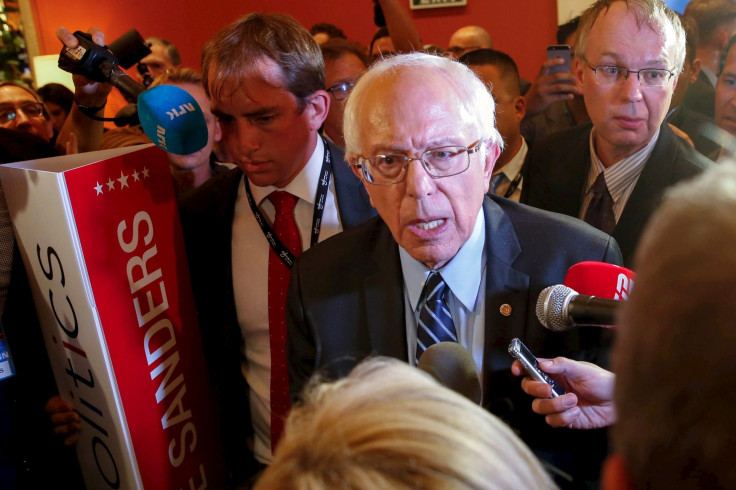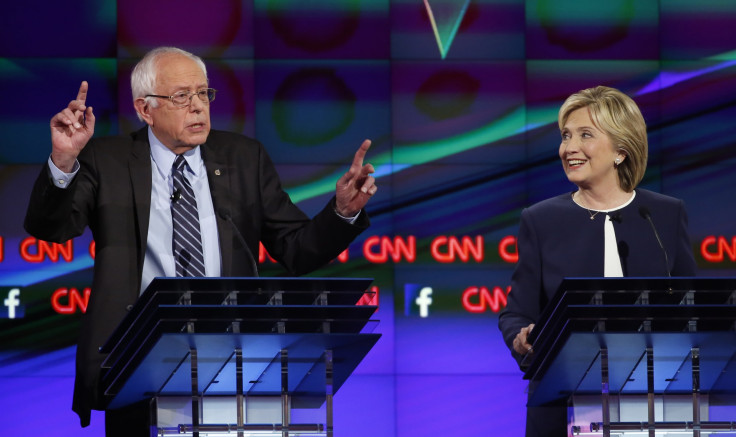Bernie Sanders Loves Denmark: Why the 2016 Democratic Hopeful Keeps Talking About Scandinavia

Bernie Sanders hasn’t been shy about his love for Scandinavian countries on the 2016 campaign trail. Those countries have much more expansive social benefits like health care and income distribution through welfare programs, which Sanders adores, even though countries like Denmark have high levels of wealth inequality just like the United States. Having single payer healthcare and a generally sturdy social safety net doesn’t come cheap, though, and there is concern that the drive and innovation the United States encourages could be extinguished if taxes were raised to make the U.S. more like Scandinavia.
“We should look to countries like Denmark, like Sweden and Norway and learn from what they have accomplished for their working people,” Sanders said Tuesday during the first Democratic debate in Las Vegas.

Denmark is well known for consistently ranking as one of the happiest nations on earth, and many point to the social systems in place there as a key ingredient to that happiness. Danish mothers get, for instance, four weeks of paid leave before expected birth dates and then another 14 weeks after (fathers get two paid weeks off). Their healthcare has virtually no out-of-pocket costs. There’s a generous pension system. Child care is subsidized and higher education is free. Finally, and perhaps most importantly, they have a flexible worker program that helps retrain displaced workers and get them working once they’re unemployed.
The United States provides much less compared to Denmark in terms of social welfare services. Federal laws guarantee three months off for new mothers, though not necessarily with pay. Healthcare was recently reformed to insure more people, but at least 11.9 percent of Americans remain uninsured. The pension system is dangerously close to breaking down. Child care is scarcely subsidized at the federal level and American college students continue to graduate with record levels of debt. There’s no federal flexible worker program.
Those flexible worker programs are important drivers for Denmark's low income inequality rates and are a product of necessity for the country. With an economy based almost solely on exports of things like precision tools and a population smaller than Massachusetts, having idle workers is not an option for Denmark. But the U.S., with its much larger domestic economy of services, could still benefit from reallocating workers swiftly even with a different economic base and population, Abrham Newman, a professor of political science at Georgetown University in Washington, D.C., said.
“People always talk about trickle-down economics, like ‘help the companies employ more people,’ but if you can also get more people into those same jobs, you get the same effect,” Newman said. The Danish government “is very active with labor market policy. They’re going to force you to move into a new sector [if you’re unemployed]. If you were in the auto industry then they’re going to retrain you as a nurse.”
The American economy largely relies on people spending what’s in their pocket at the store. And, as a rule, you have to have a job to have money in your pocket.
Some economists note, however, there is a concern that a shift to being more like Denmark, and the high taxes that entails, would necessitate an ethos change in the U.S. that could require the country to abandon the prized trait that has led entrepreneurs to start companies like Google or Microsoft generation after generation: ingenuity.
“We do reward innovation and success by immense standards,” said Barry Bosworth, an economist with the Brookings Institute, a progressive think tank in Washington, D.C.
Bosworth, who said he favors a move toward European social safety systems, noted that money tends to be a big motivator for entrepreneurial activity. Exactly at what point tax rates replace innovation with complicity is where economists often disagree, but making American social institutions more socialist would definitely require a trade-off between lower taxes and the need for services.
“You do lose some of the innovative pressures, we are accepting of that more," Bosworth said. "It has got to be true at some level that incentives matter. We just don’t know where the line is.”
The Danish government collects nearly 56 percent of the nation’s gross domestic product through taxes, making it one of the most-taxed nations in the world. There is a tiered income bracket for individuals, with those on the lower end (below 41,000 Danish Krones, or roughly $6,300 a year) paying nothing. The next tax bracket tops out at around $43,000 and is taxed at 37.48 percent. From there to about $52,000 a year is taxed at 43.48 percent and everything above that is taxed at 59 percent. Their corporate tax rate is 23.5 percent.
In the U.S., individual tax rates range from 10 percent up to a top level of 39.6 percent for individuals making over $413,201, making up seven bracketed levels. The effective corporate tax rate has been estimated to be around 27.1 percent, though its statutory rate is 39.1 percent.
For having two very different tax systems, they both have relatively high levels of wealth inequality. The top 10 percent of wealth holders in Denmark hold between 65 and 69 percent of the country's wealth. In the United States, the top 10 percent of households control almost 75 percent of the country's wealth.
Scandinavian countries in general are “able to obtain consensus. Unlike the U.S., which is a very diverse population, the Scandinavian countries at the core are much more homogeneous populations, they share common values,” Bosworth said. “So, there’s a much bigger emphasis on equality.”
But, Newman said, it’s important for Americans to remember that just because Americans aren’t paying higher taxes, they’re still paying for the services eventually.
“The reality is that people in the U.S, they pay anyway,” Newman said, for all sorts of services from healthcare to education. “We pay $40 thousand a year to go to a private college. That’s the trade off.”
Follow me on Twitter: @ClarkMindock
© Copyright IBTimes 2024. All rights reserved.






















